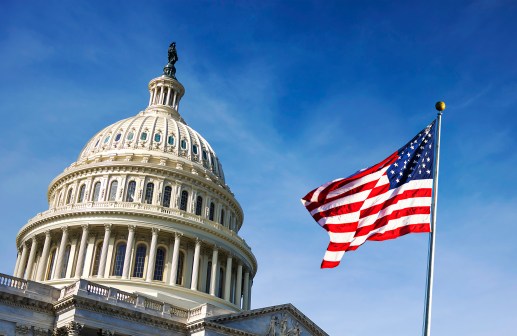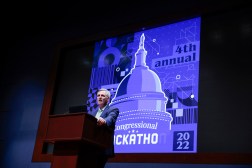There’s a new select committee for modernizing Congress. What does it mean for legislative IT?

The House of Representatives voted Friday to establish a Select Committee for the Modernization of Congress. Title II of the House rules package, which includes a provision on tech modernization, passed by a resounding 418 yea votes.
The select committee holds a wide mandate to “investigate, study, make findings, hold public hearings, and develop recommendations on modernizing Congress” in a number of areas, including rules, procedures, staff diversity and more. The committee can also make recommendations on modernizing Congress’ “technology and innovation.”
The committee will be bipartisan — with six Democratic members chosen by the House speaker and six Republican members chosen by the minority leader. Of the 12, at least two will be freshmen members. The committee can issue recommendations for modernization to Congress, but only once two-thirds of the members agree. Under current legislation, following the delivery of a final report, the committee will terminate on Feb. 1, 2020.
So far the group has a chairperson — Speaker Nancy Pelosi announced that she’s chosen Rep. Derek Kilmer, D-Wash., to lead the effort on Friday afternoon.
So what does the creation of this select committee mean for IT systems in the legislative branch?
The Issue
Congress depends on a variety of IT systems, many of which could stand to be updated. But modernization advocates from various ideological backgrounds identify Congress’ constituent communications systems as a particularly front-of-mind issue.
In the past years, constituent populations have grown as Congressional staff numbers have declined. This means Congress increasingly needs to use modern communication technologies to fulfill its most important mission — accurately representing the people.
But members of Congress aren’t often using the best tools available. For example, so much constituent communication is dominated by mass emails, Brad Fitch, president and CEO of the Congressional Management Foundation, told FedScoop. But is this effective? The sheer number of missives makes it hard to know if these campaigns are successful, or if either side is paying attention.
Want to call a member of Congress instead? Research by the OpenGov Foundation found that, given staffing shortages, member voice mailboxes are often simply full. Last year the OpenGov Foundation released Article One, a tool meant to help offices solve this problem.
While the public’s frustration with this can be seen in Congress’ low approval ratings, those on the inside are struggling too. A 2016 survey of staff and members by the Congressional Management Foundation found that while 60 percent of respondents think technology infrastructure in Congress is “very important,” only 6 percent are “very satisfied” with how the existing infrastructure supports members’ duties.
“Congress needs reforming,” Mark Strand, president of the Congressional Institute, told FedScoop. “I think this is something that is widely agreed on, regardless of your politics.”
The Challenges
Modernizing backend technology in Congress, as elsewhere, isn’t sexy. And in Congress, as elsewhere, there are lots of competing priorities for time.
The select committee will face challenges in making sure the work of the committee gets the attention it needs. Part of this, Fitch said, is about selecting the right members — members with enthusiasm for the challenge. “Hopefully it’ll be people who want the job,” he said.
There’s also the issue of resources. Similar congressional reform committees in the past have seen dedicated funding, but this one doesn’t have a specific number associated with it yet. It’s often politically difficult for Congress to spend money on itself. The committee doesn’t have dedicated staff either — per the legislation it can call only on the services of existing House staff.
Strand maintained that, even given some limitations, the existence of this committee is a step in the right direction. “It’s good, it’s a good start,” he said. “Is it enough? Probably not, but it could lead to something a lot more down the road.”
The Opportunity
Challenges notwithstanding, the new select committee has an enormous opportunity in front of it. And there’s precedent here, too — Congress has traditionally undergone some of its biggest reforms with the guidance of joint select committees.
But it has been a while since the legislative body took the time to examine its own operations — the most recent joint select committee wrapped up in 1993. “A lot of stuff has happened, particularly in the technology sphere, since the early 90s,” Zach Graves, head of policy at the Lincoln Network, told FedScoop.
What the committee chooses to focus on remains to be seen, but Graves said he hopes it will make genuine efforts to improve constituent communications, including by opening up the constituent relationship management software contracting field to more competition. He’d also like to see the committee recommend legislation to handle speech and debate issues that keep congressional offices from taking advantage of some cloud services and look seriously at the creation of a Congressional Digital Service.
“We’re thrilled that they’re doing this,” Daniel Schuman, policy director at Demand Progress, told FedScoop. “Congress has real trouble serving the needs of its members, of the staff, of constituents, and the recommendations that they come out with will help Congress better serve the American people, which is the whole point.”






